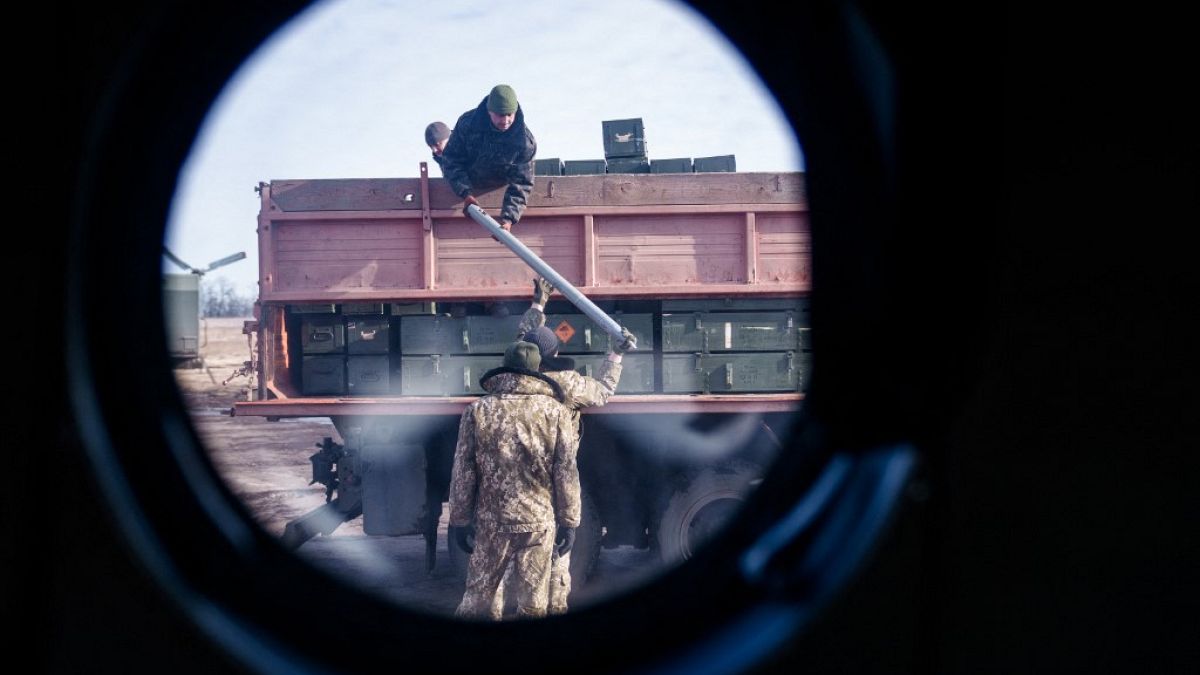The Ukraine war has exposed large holes in the military's stockpiles: How can NATO get much-needed ammunition faster?
In the fight against Russia, is the Ukrainian military firing more ammunition than it can produce?
NATO now wants member states to agree new supply contracts promptly and defence companies to expand manufacturing capacities.
But is it that simple? What can NATO do to respond to the increased demand for ammunition?
How is the production of weapons and ammunition currently managed?
Both weapons systems and ammunition are produced by defence industries with orders placed by governments.
NATO countries commit to providing a certain amount of weapons and ammunition to the military alliance. However, these quotas are only politically (but not legally) binding, Jamie Shea, Former Deputy Assistant Secretary General of NATO, told Euronews.
Even before the war in Ukraine, NATO members were required to have enough ammunition on hand for a month. It wasn't until the Russian invasion in February last year that it was revealed many countries are not actually able to service NATO's quotas at all.
And because countries invested more in developing new technology in peacetime than in producing ammunition for weapons systems the countries already possess, it might take a while to get the necessary bullets and shells, Shea believes.
German defence industry example: orders slow to come in
While the consumption of ammunition exceeds the current production rate, putting pressure on defence policy, (and yes, some defence companies are overbooked) the industry would already be able to afford the required capacity in some cases, Dr Hans Christoph Atzpodien, chief executive of the German Security and Defence Industry Association (BDSV), told Euronews. "The industry has made advance payments," Atzpodien said.
Last December, for example, defence contractor Rheinmetall announced plans to build new ammunition production facilities in Germany. The underlying contract for the production of "Gepard" ammunition have now also been signed, according to Tuesday's announcement by German Defence Minister Boris Pistorius.
But in most cases, it is precisely these official orders that are missing, the BDSV chief said, describing the situation from the defence industry's point of view. "What we need are orders that allow better planning over long periods of time and create opportunities for greater profitability of investments."
Where are the NATO ammunition stockpiles?
After the Cold War, global defence budgets declined and more and more countries downsized their militaries.
To respond more flexibly to demand for weapons and ammunition, and because it was cheaper and safer, stocks were kept domestically.
That is now slowly changing, Shea explained, pointing to examples such as the permanent redeployment of US troops to Poland, NATO forces in the Black Sea and the reopening of the British military base at Sennelager.
It's "no good sending tanks to Eastern Europe if you don't send the ammunition at the same time," he said.
Can the EU coordinate the production of munitions?
Similar to the joint purchase of COVID-19 vaccines, the EU Commission President, Ursula Von Der Leyen, as well as the EU Foreign Policy Chief, Josep Borell, have now proposed controlling the purchase of ammunition for EU countries.
In itself, this makes sense, says Shea, "the bigger the contract, the lower the price that you can ask for." However, this process would take a long time because of the validation stages at the EU level. Another hurdle, he says, is the different weapon systems European countries operate with: 176 different systems, most of which use different ammunition.
"As long as we have 176 different weapon systems, compared to only about 35 in the US, we're not going to be able to have any kind of mega-standardisation on a particular type of shell or calibre," Shea added.
How does NATO get the ammunition it needs quickly?
A solution in which NATO countries produce enough ammunition for their own supplies and the needs of Ukrainian forces will "not happen overnight," the former NATO official said.
That's because, for one thing, the industry can't respond that quickly, having to hire personnel and expand manufacturing facilities. For another, the disrupted global supply chains also affect components such as electronics or explosives needed to produce munitions.
The interim solution
The key to the issue of rapid ammunition procurement lies in an interim solution, Jamie Shea believes: NATO has already begun going to countries outside Europe that use Western military equipment to ask for or buy back ammunition from them.
Moreover, the industry could be cancelling or deferring contracts to customers in order to focus on munitions production.
Stoltenberg recently travelled to South Korea and Japan to ask for Western ammunition for Ukraine, and in that context also spoke of a "war of logistics or a race against time," because Russia is doing the same thing as NATO.
But, Shea adds, NATO needs to be quick because munition plays an important role in the war: "The Ukrainians will need more to blunt a Russian offensive and they will need a healthy supply if they're to go on an offensive of their own."
